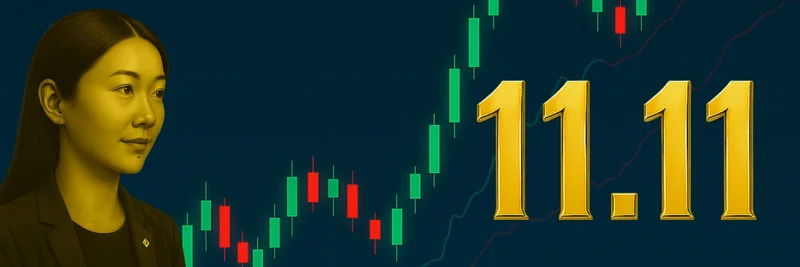The token “11.11” on BNB Chain (contract: 0x3319a97fa1fdcdba14ecf1dab7f5d7dc4fbee91a) currently has little to no public documentation or listings as of November 11, 2025. That usually means it’s either very new or niche. If you’re exploring it, approach with caution and lean on on-chain verification and community tools.
What we know right now:
- Network: BNB Chain (BEP‑20).
- Contract: 0x3319a97fa1fdcdba14ecf1dab7f5d7dc4fbee91a.
- Public info: Limited—no widely known listings or official announcements found yet.
Simple ways to verify on-chain:
- Check the token page on BscScan by pasting the contract address. Review:
- Holders and holder concentration (top wallets’ share).
- Total supply and whether minting or blacklist functions exist.
- Contract status (is it verified? is it upgradable/proxy?).
- Recent transactions for unusual patterns (large insider transfers, sudden spikes).
- Look for a liquidity pool on common BNB Chain DEXs. You can search by contract address on:
A quick safety checklist before interacting:
- Contract verification: Prefer verified source code and renounced ownership (if applicable to the token’s model).
- Trading taxes: Check buy/sell tax. High or variable taxes can be a red flag.
- Honeypot risk: Test small trades first to ensure selling is possible.
- Liquidity: Confirm there’s sufficient, non-removable liquidity (e.g., locked LP or time-locked).
- Socials and docs: Look for an official site, GitHub, audit, and active community channels. Absence isn’t a definitive red flag, but it raises risk.
Where to track and trade:
- For trading analytics and fast tracking, see the dedicated page on GMGN.AI. It offers real-time charts, smart money tracking, and risk checks tailored to meme tokens.
- If you choose to swap, use PancakeSwap. Import the token by pasting the contract address and verify the token name and decimals carefully.
- Complement your analysis with price/liquidity views on Dexscreener and DEXTools.
Step-by-step: test and trade responsibly
- Start on BscScan token page and review holders, transfers, and contract functions.
- Open GMGN.AI to check live trading activity, potential taxes, and smart money movements.
- Verify liquidity existence and health on Dexscreener or DEXTools.
- If you decide to trade, use PancakeSwap. Start with a tiny test buy, then confirm you can sell. Adjust slippage only as needed, and be mindful of any tax.
- Never skip risk management: set position limits, use stop-loss concepts where feasible, and avoid chasing thin liquidity.
Ongoing monitoring:
- Watch for contract updates (proxy changes, ownership transfers).
- Track wallet distributions; rising concentration in a few wallets increases risk.
- Monitor liquidity locks and unlock schedules.
- Keep an eye on community updates—new listings or audits can materially change risk.
Frequently asked questions:
- Why is there so little info? Early-stage or niche tokens often launch before marketing or listings. That doesn’t make them good or bad—just unverified.
- Can I trust a verified contract alone? Verification helps, but you still need to look at ownership, admin functions, taxes, and liquidity.
- What’s a honeypot? A trap token that lets you buy but prevents selling. Always test with a small amount.
Bottom line:
11.11 may be an early or low-profile token on BNB Chain. Treat it as high risk until proven otherwise. Use on-chain data, test carefully, and rely on trusted community tools—especially the token’s page on GMGN.AI—before committing capital.




